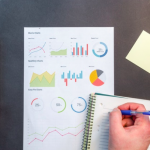Is Covid-19 fast-tracking the future of work?

There is an opportunity to thrive at this difficult time. Forward thinking leaders will be considering what they can take from this crisis into the future – where are our gems for the next phase?
There are at least four scenarios regarding how work could change or not change after COVID-19 washes over: we could go back to ‘normal’, however seriously different that is; we could suffer damage to our teams and workforces, as people reel from challenging circumstances; we could build in new practices that are better than the old ones and proactively establish the cultures and workplace environments we want for the future; or these changes could happen simultaneously, all at once.
In all likelihood, it is going to be difficult to go back to exactly the way things were. This economic disruption is likely to herald a workplace disruption. Not that getting together in the office will go away completely, because it plays such an important role.
Opportunity is rich at this moment. Flexible work is a powerful lever for engagement. Engaged employees make a point to show up and do better work — highly engaged business units realize a 41% reduction in absenteeism and a 17% increase in productivity according to Gallup data.
When it comes to an effective remote and flexible working culture, leaders have had a problem for the last few decades. Only the ‘trusted few’ have been seen as eligible or worthy of these non-traditional arrangements. Flexible and remote work arrangements have been special and unachievable.
With lockdown here – or your version of it – the incredible advantage is that every person on your team knows what it feels like to work remotely – its challenges and opportunities. Now is exactly the time to capitalise on remote work and make it work for you.
In Australia the Federal Government has repeatedly said that the COVID-19 pandemic will affect the country in some way for six months. Why not set up for long term success?
Effective adaptations to working from home are normally implemented over a three-to-four month period. There are five key elements to manage.
Capability Review – Firstly, take a look at your capability in key areas like communication, teamwork, outcomes orientation, familiarity with relevant technologies and attitudes to flexible and remote work. Include a look at Work, Health and Safety here so you can be sure you are meeting your legislative requirements.
Manager support – Support your people leaders – leaders, managers and team leaders – to understand how to address the challenges and maximise the opportunities of flexible work styles. Give managers an opportunity to talk in a trusting environment, where they can air their concerns freely – in our experience, managers will have serious concerns and those will hold you back unless they are aired and dealt with.
Team training – Set expectations amongst team members about what this new world requires of them. Responsibility rests with them alone to maintain the disciplines that keep them productive, to initiate communication and repair working relationships – to make an effort beyond their previous ‘normal’ in a traditional office environment.
Empower with co-design – Involve your team in creating their new conditions for success. It is difficult to overstate the power of this particular element of your process. Having worked out where the dragons lie, bring your team together to work out how to slay them. They will bring their best selves and you’ll be amazed at the results.
Complete your approach with experimentation – Nothing ruins an adaptive tactic like thinking you have worked it out before you start. Iteration and evolution are critical. Involve your team. Continue to assess what is working and what is not. By talking about how you work, rather than what you’re working on, you’ll build teamwork.
What do you get from implementing the above? We have seen leaders attract incredible talent into key roles – more applicants than they can handle. Team members whose wellbeing is significantly improved. Loyalty can increase by more than 20% as team members become more satisfied with their work and their team.
How is your business going to do things differently post COVID-19?
Share your thoughts. Post a comment on First 5000 – Have your Say on LinkedIn or email editor@first5000.com.au with your story.
Nina Fountain is the CEO of The Workspace Connection, formally, Transformed Teams. A leading expert on remote and flexible work, Nina has consulted with leading businesses, conducted research and provided advice to many employers. Nina now assists businesses to drive amazing service outcomes and powerful staff engagement through clear results management, leadership and highly productive remote and virtual work arrangements.







